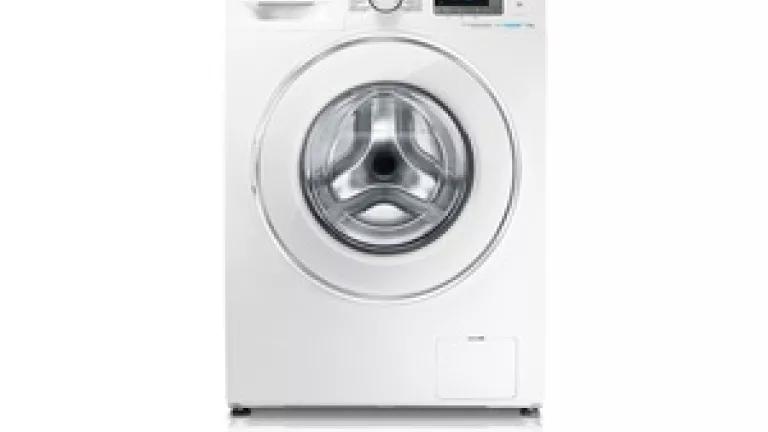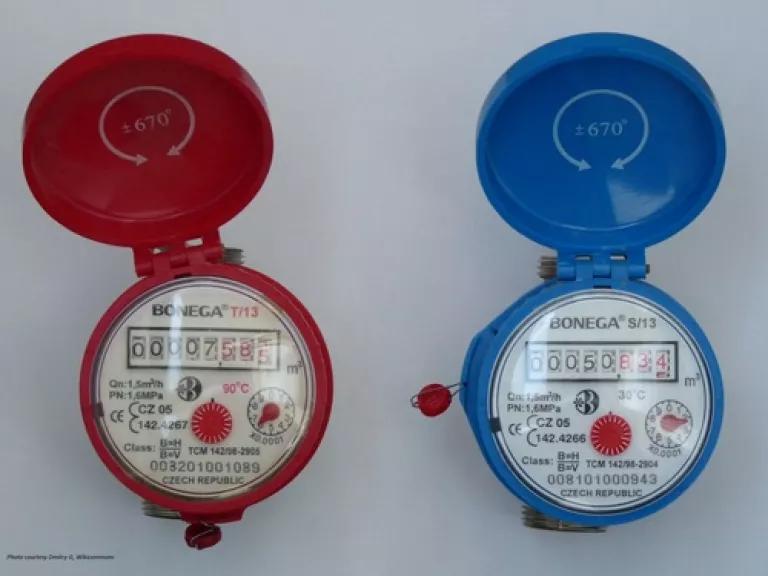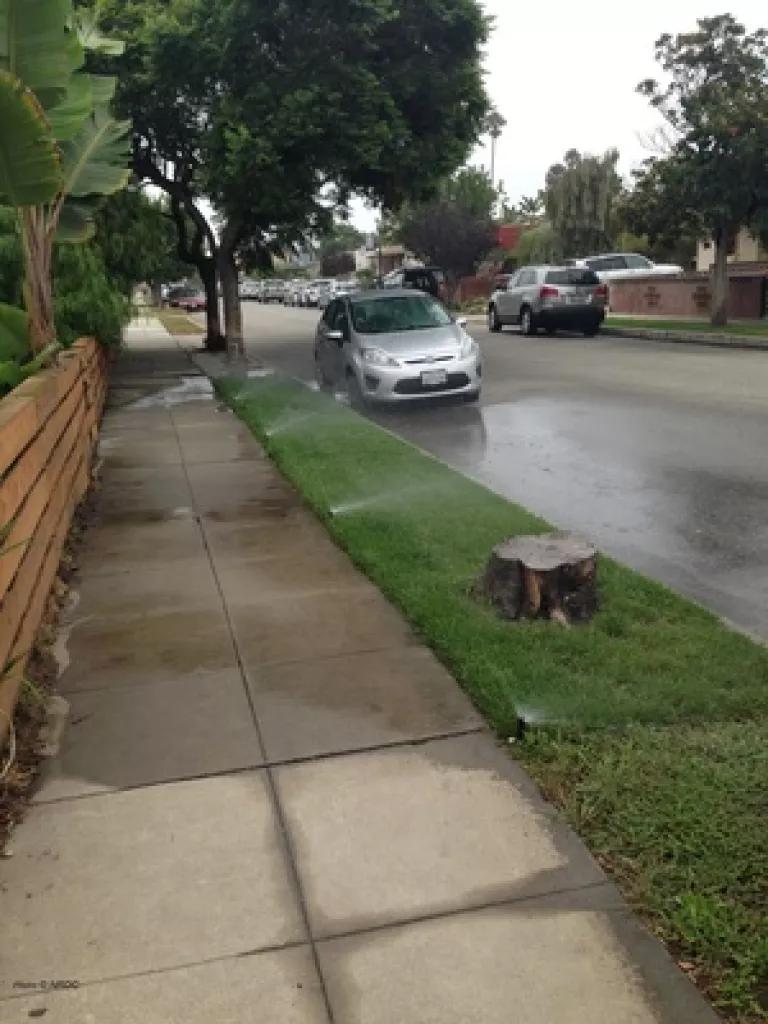
Kudos to Los Angeles Mayor Eric Garcetti for proposing ambitious new water-saving goals for the city. Hizzoner aims for dramatic reductions in water use over the next two years. L.A. has already made impressive strides -- water use today is comparable to the 1970s, even with over a million additional residents. That said, the city still uses a heck of a lot of water – well over 500 million gallons each day – much of it outdoors.
There are compelling reasons for L.A. to curb its demand for water. First, we don’t know how long the current drought will last. Second, we don’t know how soon the next drought will arrive (but it most certainly will). And third, climate change will affect both the demand for water and the availability of water supplies in ways that could send the cost of water service through the roof.
Given these imperatives, this semi-arid city needs more than short-term curtailments to place its water use on a sustainable footing. New policies need to be put in place to ensure that efficiency gains are enduring, and that water awareness won’t end with the next brief rainfall.
Here are 6 policies that can help meet the mayor's near-term goals and bring lasting gains in water efficiency to Los Angeles:
1. Revise LA DWP water rates. The city should aim to have a revised water rate structure in place by July 2015, so that it has enough time in effect to help meet the mayor’s January 2017 target. That means the process should get started this fall. We recommend that DWP evaluate options that would include the following:
- Single-family residential rates that are fashioned into a 4-tier rate structure, designed to maintain affordability for first tier usage and send a strong price signal to peak-season outdoor use
- Eliminate the current practice of increasing the lower tier allocations in summer months – this undercuts the very conservation message that the rate structure should be sending, and exacerbates the unfairness of the current rate design
- Move toward a rate structure that accounts for the number of dwelling units in each multifamily building. Starting with the largest buildings, collect dwelling unit counts for each apartment building and establish tiered rates based on consumption per dwelling unit. This will improve the rate design for master metered buildings, and is distinct from submetering (below).
- Incorporate true seasonal rates (higher on-peak, lower off-peak) into commercial, industrial, and institutional rate designs.
We also recommend that DWP commit to a transparent rate-making process, and allow responsible parties to access a year’s worth of redacted customer consumption information to enable independent analysis of potential rate designs.
2. Removal of remaining inefficient plumbing fixtures from pre-1994 buildings. The city should consider local enforcement options to implement SB 407 (2009) (Cal. Civil Code § 1101.1 et seq.), which requires all inefficient plumbing fixtures to be replaced with water-conserving plumbing fixtures in single-family residential buildings by January 1, 2017 and in multifamily residential and commercial buildings by January 1, 2019. In cases of properties undergoing major renovations and additions, enforcement of the bill’s requirements falls to local building code officials. In the case of all other existing buildings, SB 407 explicitly authorizes, but does not require, cities, counties, and water suppliers to enact local ordinances or policies to enforce the bill’s provisions.
As a result of this non-mandatory enforcement responsibility, few, if any, local jurisdictions or water suppliers have adopted mechanisms and policies to ensure full compliance with the requirements of SB 407. Nevertheless, the law is clear that inefficient plumbing fixtures need to be replaced by certain dates and that enforcement power ultimately lies with local jurisdictions, which could even accelerate the replacement deadlines if they chose.
In addition to the city’s existing retrofit-on-resale requirement, a mix of regulatory and non-regulatory measures could be implemented, including targeted rebates, direct installation programs for low-income residences, replacements in public buildings, and compliance certifications for newly leased rental property and annual business license renewals.
3. Clothes washer replacement.
A legacy-design top-loading washer with a center agitator uses about 3 times the amount of water per load as today’s most-efficient new washers. Washing clothes with a legacy washer consumes about 20% of a household’s total indoor water use, or about 10% of total water use (i.e., including outdoor use). With the mayor calling for consumers to reduce water use by 20%, a family that retires its old top-loader can realize about one-third of the savings the mayor is asking for by taking this one single action. The city could accelerate retirement of inefficient washers by:
- implementing a direct install program for replacement of inefficient top-loaders in low-income residences
- suspending the city portion of the sales tax on the purchase of new Energy Star clothes washers by Los Angeles residents during CY 2015
- preventing used top loaders from coming back into service wasting more water by offering a rebate for working inefficient top-loading washers picked up or traded in from a Los Angeles address

Water metering and volumetric pricing are essential tools to provide city residents with an accurate price signal regarding their water use. However, most apartment buildings receive water service through a single, utility-owned master meter, leaving owners to recover the cost of the entire building’s water service in the rent, or allocate the cost among the residents as a uniform charge, which hides the true cost of water usage by individual occupants.
Residents in apartments will not know how much water they use unless water entering each unit is measured. Studies have shown that water submeters are associated with decreased water usage. The National Multiple Family Sub-metering and Allocation Study (2004), sponsored by the US EPA, EBMUD, and San Diego County, among others, found water savings of 15.3% when comparing sub-metered properties with rental properties that do not bill water separately from rent (“in-rent” properties). Another study showed water usage in sub-metered properties to be 18% to 39% less than in-rent properties.
Tenant protection issues are important, and should apply to any submetered building. But all new multifamily buildings should be required to install submeters, unless site-specific engineering criteria preclude their installation and use.
5. Water use benchmarking and disclosure for large buildings. AB 1103 (2007) requires energy benchmarking and selected disclosure for non-residential buildings. Under AB 1103, building owners input energy consumption and other building data into the Environmental Protection Agency’s Energy Star Portfolio Manager software system, which generates an energy efficiency rating for the building. Los Angeles should expand on this new state requirement by:
- including water use as well as energy use (which Portfolio Manager can accommodate)
- include large multi-family buildings as well as commercial buildings
- require annual public disclosure, rather than simply disclosure to a building’s prospective purchasers and lessees
6. End sprinkler irrigation of parkway strips.

Narrow parkway strips along street rights of way (the grassy strip between the sidewalk and the curb) are almost impossible to efficiently irrigate with sprinklers. Their narrow shape and exposure to foot traffic results in broken and misaligned spray heads sending water into the gutter all too often, frequently during nighttime periods when the water waste is less apparent.
The city should take an inventory of all parkway strips, and beginning with narrow (four feet or less) strips, require the removal of sprinkler irrigation and replacement with drip irrigation, xeriscape vegetation, porous pavers, or some combination of these treatments. As experience with the program grows, wider strips can be targeted as well.
Los Angles has a colorful history when it comes to water. But we don’t need a private eye a la Chinatown to find water being wasted today. Water use data indicates clearly that landscapes continue to be overwatered and that old plumbing and appliances still take their toll. The city needs to price water more sensibly and ensure that today’s water-saving technologies are available to all. The mayor’s call for savings is a great start. The rest of us need to roll up our sleeves and help make it happen.

